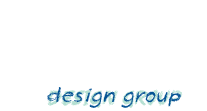User-experience design, or UX design as it's become known, refers to the development of systems, resources and processes to make them as user-friendly as possible.
Getting the user experience right is vital to ensure user satisfaction and that means making sure the entire process a user has to go through is perfect.
However, user-experience design also needs to consider the business too, and what that wants to achieve from the product. There's no use designing a product that's great for the user, but doesn't have any benefit for the business.
Key features of UX design
UX design refers to the overall experience, but there are many elements that make up a great user experience.
For example, a good navigation design will make sure visitors can easily find their way around the site, users can find what they're looking for within the software, and end up at the destination they expect. If referring to a website, it could lead them to make a decision (such as contacting you to find out more or to sign up to your services), the end of the purchase process, or alternative end of the journey.
Visual design makes the website, software or service pleasing to look at. It comprises the user interface and all design elements, including colours, icons and anything else that changes the look and feel of the site. Any element here should aid the user journey and ensure users aren't put off or led away from what they're doing by obtrusive elements.
Infrastructure design is the basis upon which the site, software or service is built on. It should be effective, fast and make sure all elements flow with as little latency as possible.
Interaction design is how the user interacts with the product. If they do something, such as click a button, what is the result? Is it expected? Is it natural? Does clicking something trigger another action? If so, is this a smooth experience? These are all considerations a user experience designer should consider. All interactions should be planned to happen for a reason, making sure there are no surprises and they address the user requirements you identify through your research.
How to create a great UX
The first step to designing a great UX is to make sure you know who the user is and how they will use your product. If you're creating software, for example, this will help you understand which platforms to design it for and which you can drop if the market is unlikely to need it.
Next, you need to focus on getting the building blocks right. Don't start with the visual elements of the design until you know the basics of how the site will work. Find a great technically-focused UX design and get the graphic designer in after the individual elements work seamlessly together. Dressing it up should be the last thing you consider.
Get feedback from your users and business stakeholders along the way, at defined points if need be. After all, they're the ones you will need to impress and it's imperative they are happy with the way it works before signing each stage off. But don't just ask their opinion, watch how they react and use the product when given a list of tasks to complete. If they complete them quickly and find what they're looking for, it's a success. If it takes longer than you anticipated or they become frustrated, elements should be redesigned.
Even when your product is built, tested and released, it's imperative you constantly measure its success and monitor the features that are/aren't being used, plus finesse the experience if it's not working as successfully as you were hoping. This way, you can make sure every element improves the user experience.
Original article on IT Pro.
